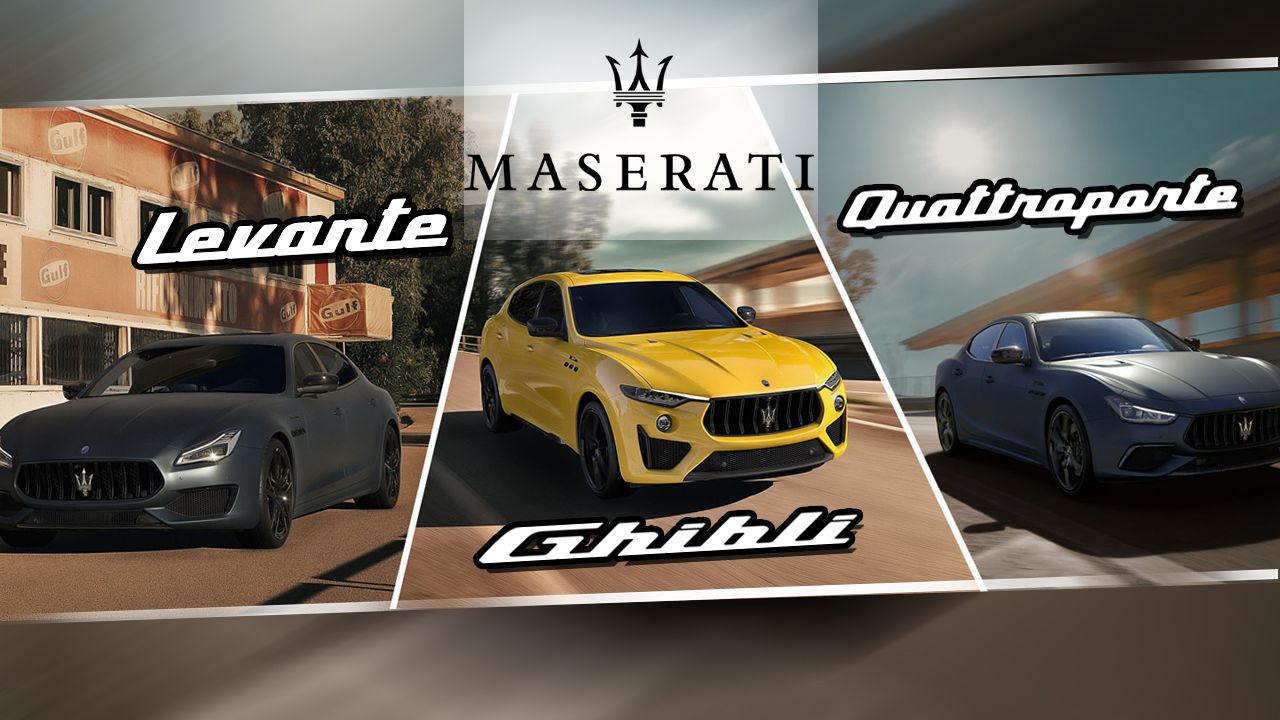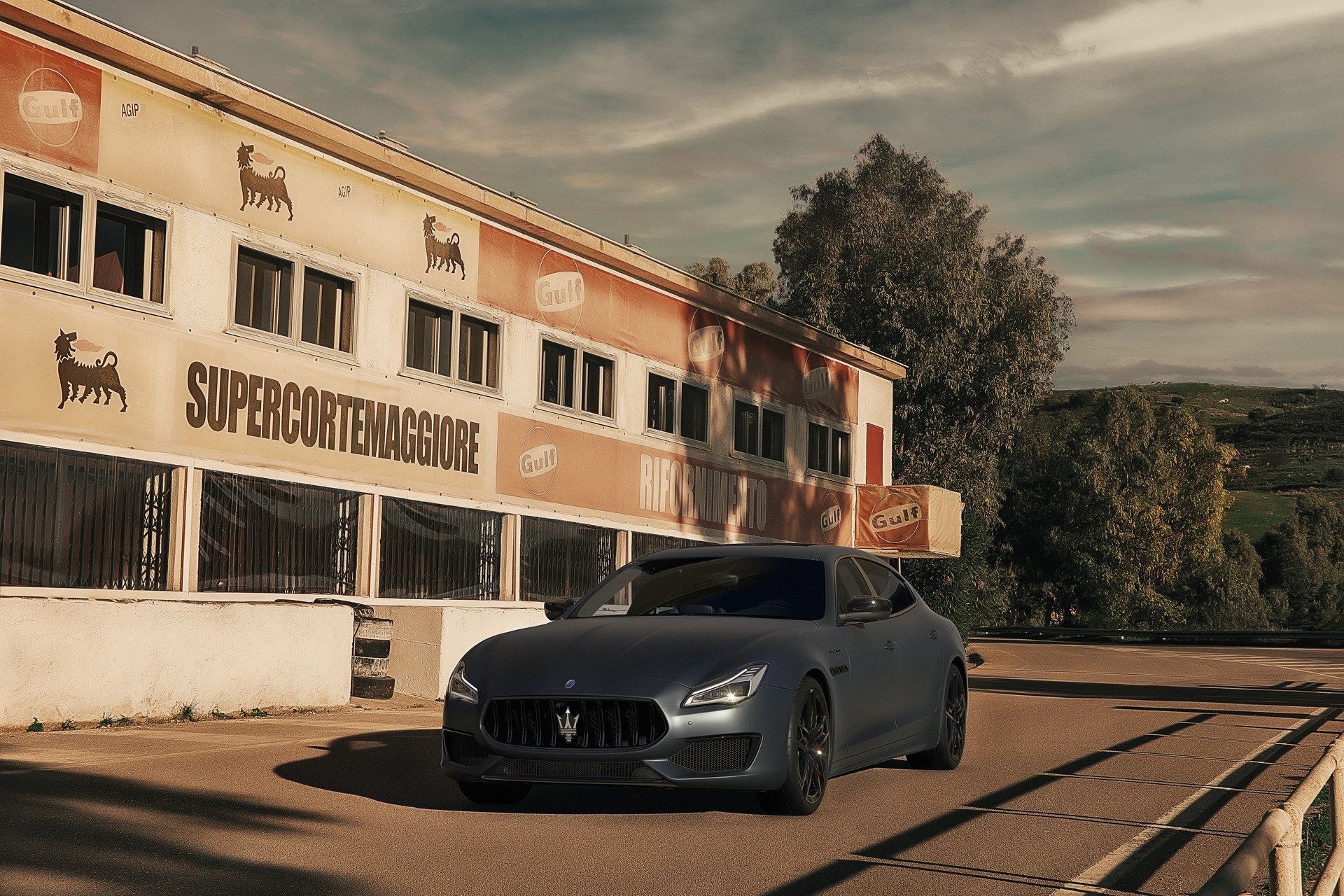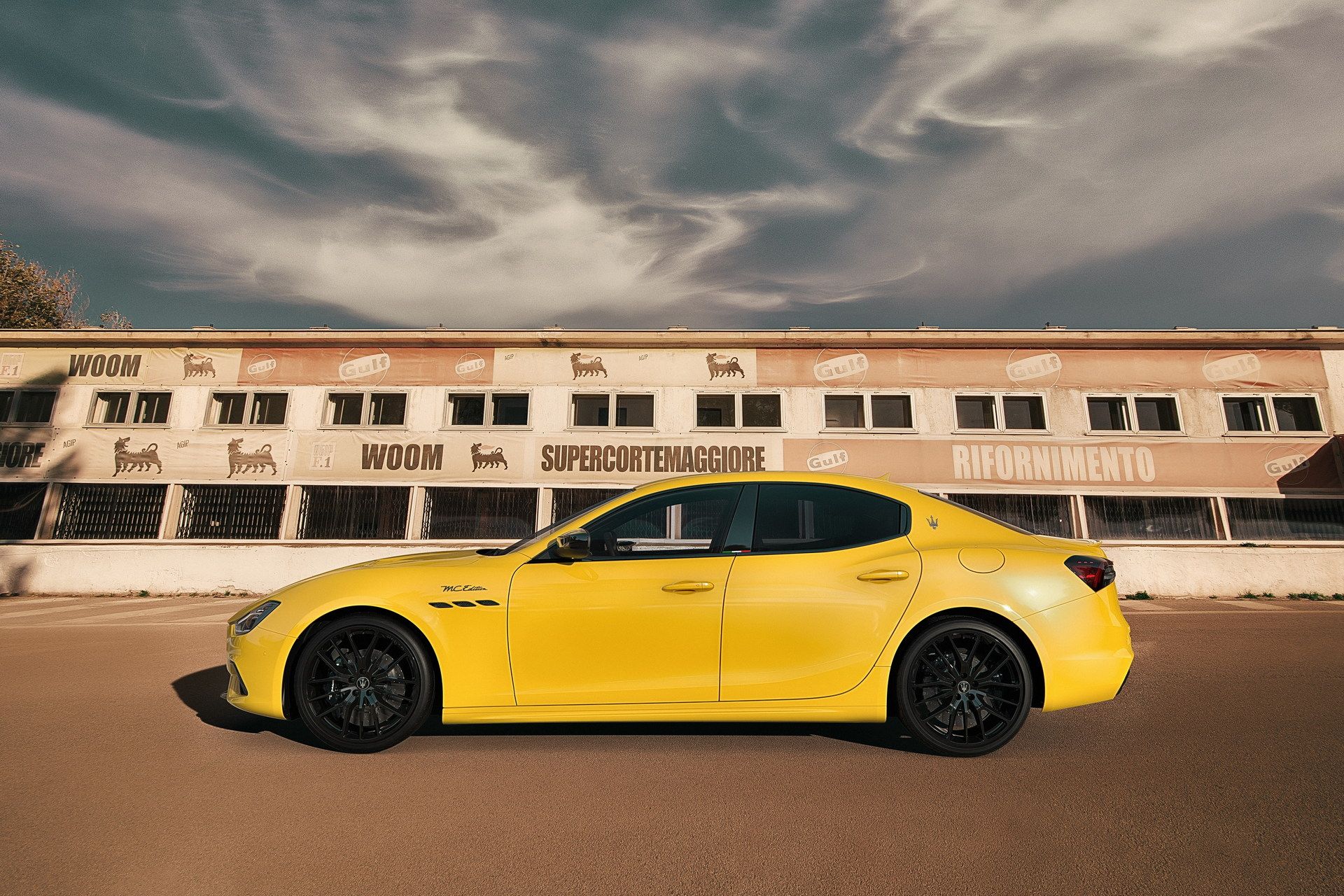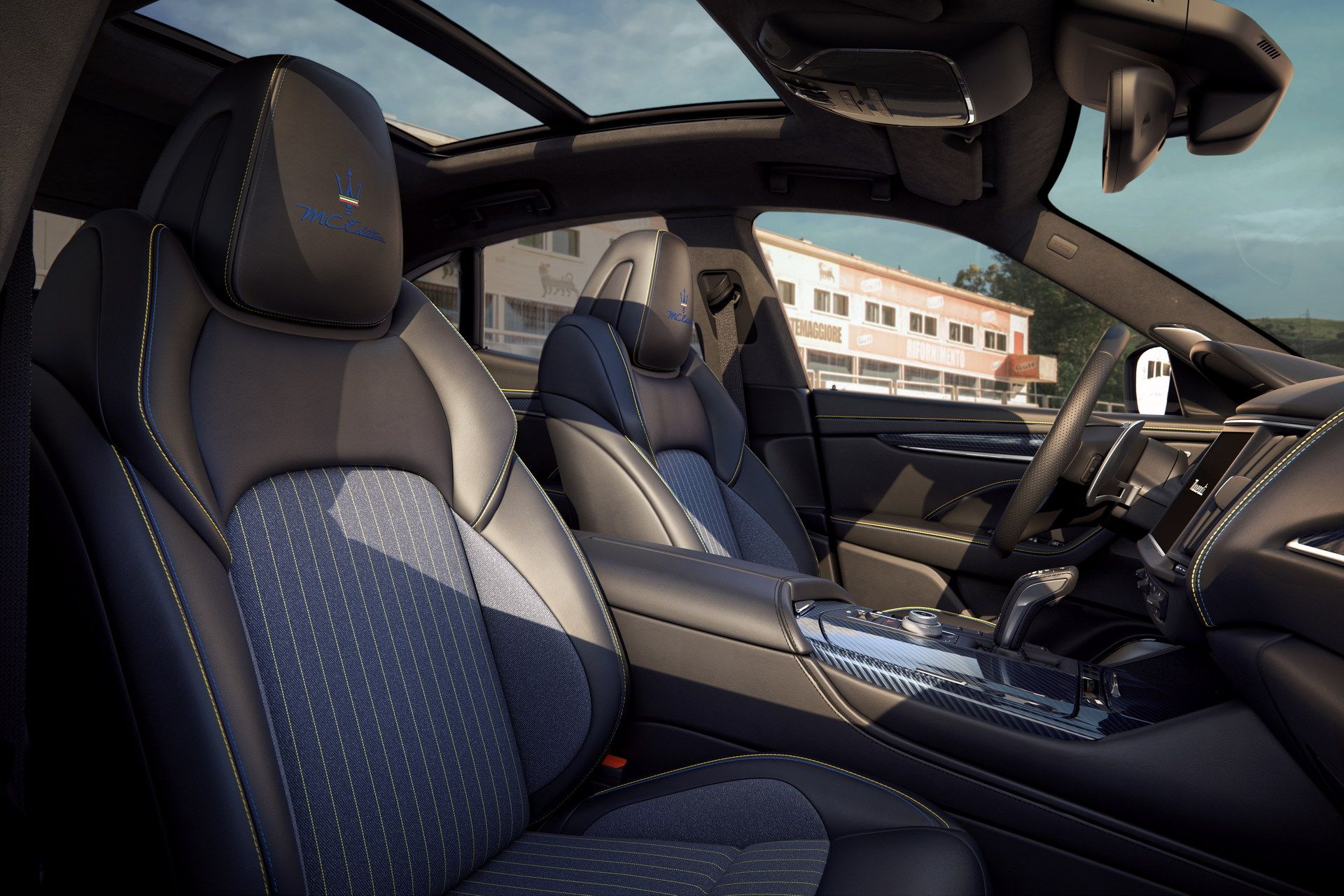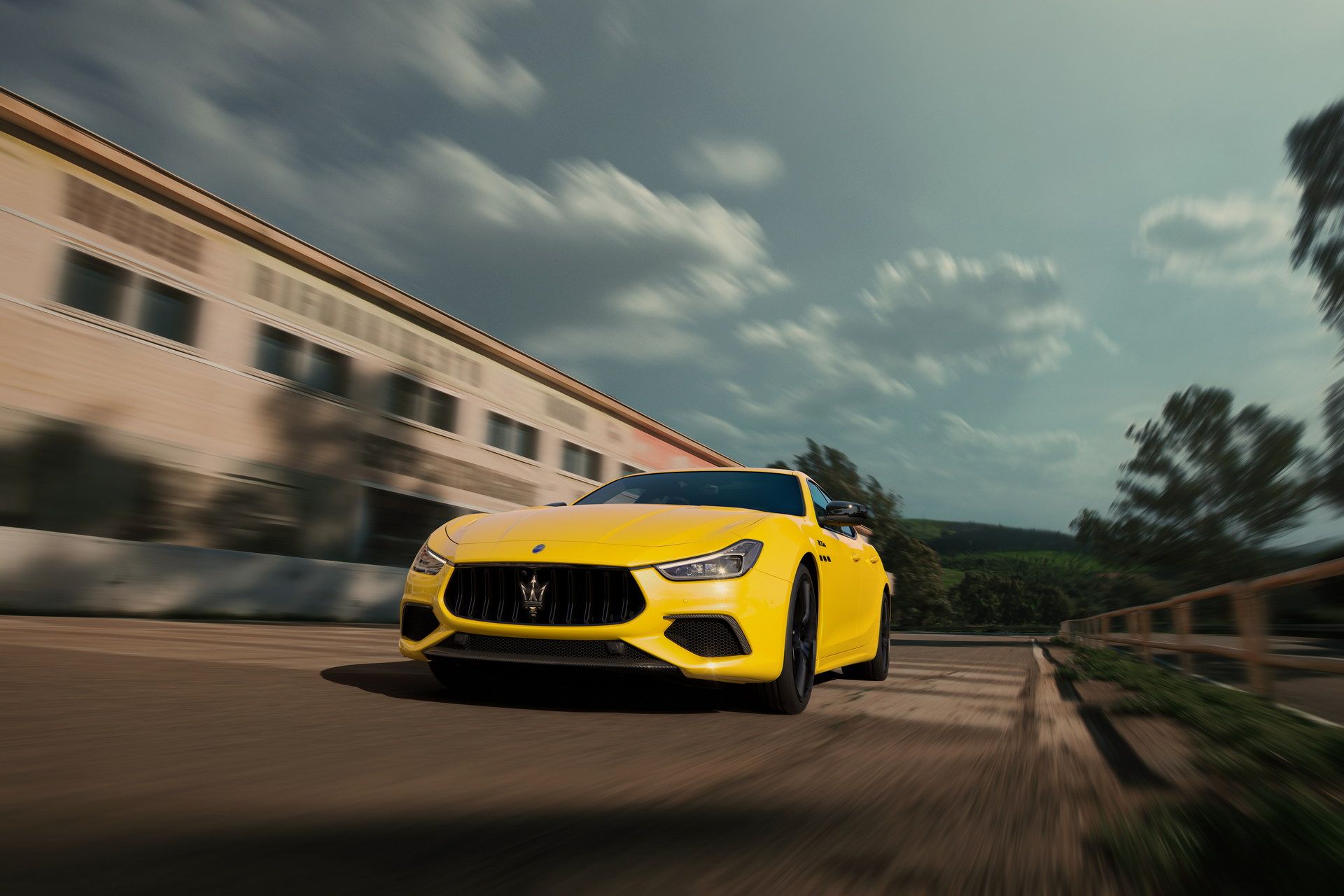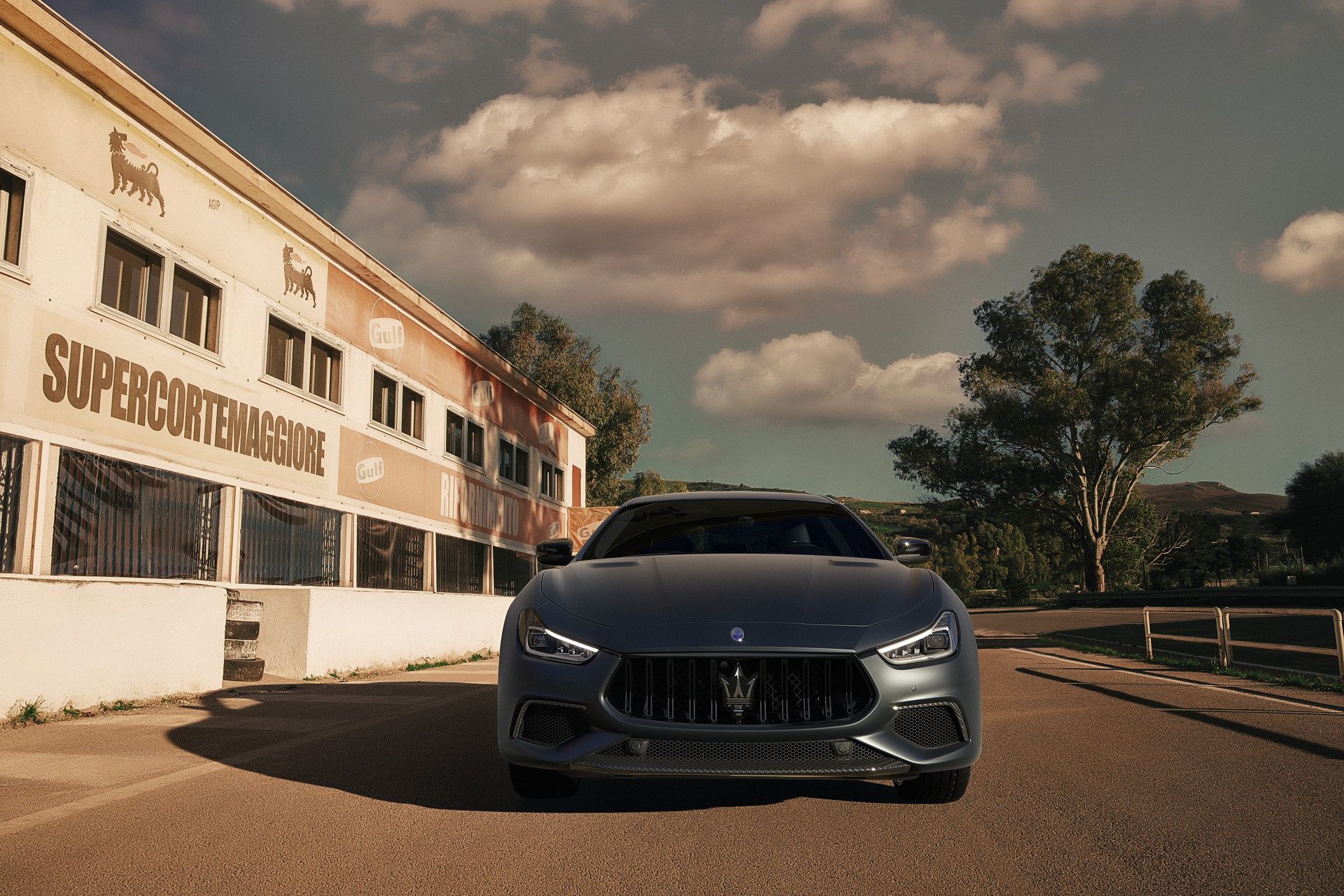Maserati has given the MC Edition treatment to the Ghibli, Levante, and Quattroporte, and these will be exclusive to its V-8-powered models. In short, this special edition package is exclusive for the Trofeo models of these three nameplates.
Starting with its exterior, the MC Edition models set themselves apart with their exclusive Giallo Corse and Blu Vittoria paint selections. Giallo Corse is a three-layer yellow color with blue mica interfering with the light, while Blu Vittoria is a matte three-layer blue paint.
Other details that make the MC Edition special are its piano black exterior details, including the 21-inch wheels for the Ghibli and Quattroporte, or the 22-inch wheels for the Levante. There's also MC Edition badging on the fenders along with a tri-color emblem on the B-pillar symbolizing the Italian flag.
As for the interior, there's a generous serving of blue carbon fiber trims, along with black leather and denim blue seats. Blue and yellow stitching also adorn the rest of the interior, while an MC Edition logo has been embossed on the headrests. Another neat detail is that the trident badge on the headrests feature the Italian flag. Other amenities include a sunroof, a Bowers & Wilkins sound system, and the Driver Assistance package suite of advanced driver-assist tech.
Under their hoods is a 3.8-liter twin-turbo Ferrari-sourced V-8, the same engine powering the Trofeo versions of these three vehicles.}
This year will also be the final year that Ferrari will supply its engines to Maserati, so if you want your Maserati to come with such an engine, then this year will be your last chance. Moving forward, future Maseratis will most likely come with a derivative of the V-6 it made for the MC20 supercar.
Interestingly, however, the Maserati MC Edition models destined for China won't be fitted with a V-8. Instead, all three models will come with the 3.0-liter twin-turbo V-6 that produces 350 horsepower and 369 pound-feet of torque.
The Maserati MC Edition range will initially go on sale in Europe, the Middle East, Africa, Asia Pacific, and China starting this February.

